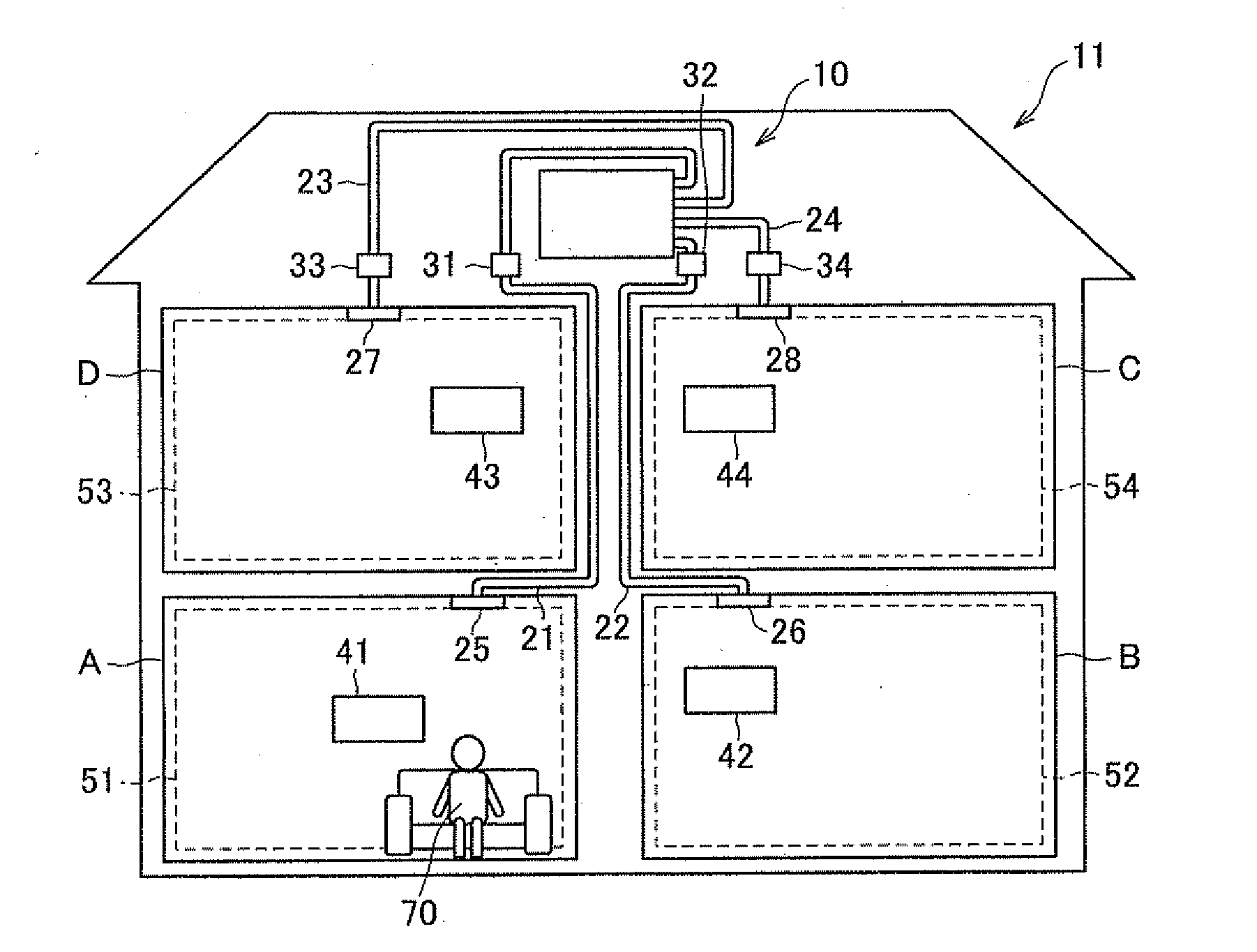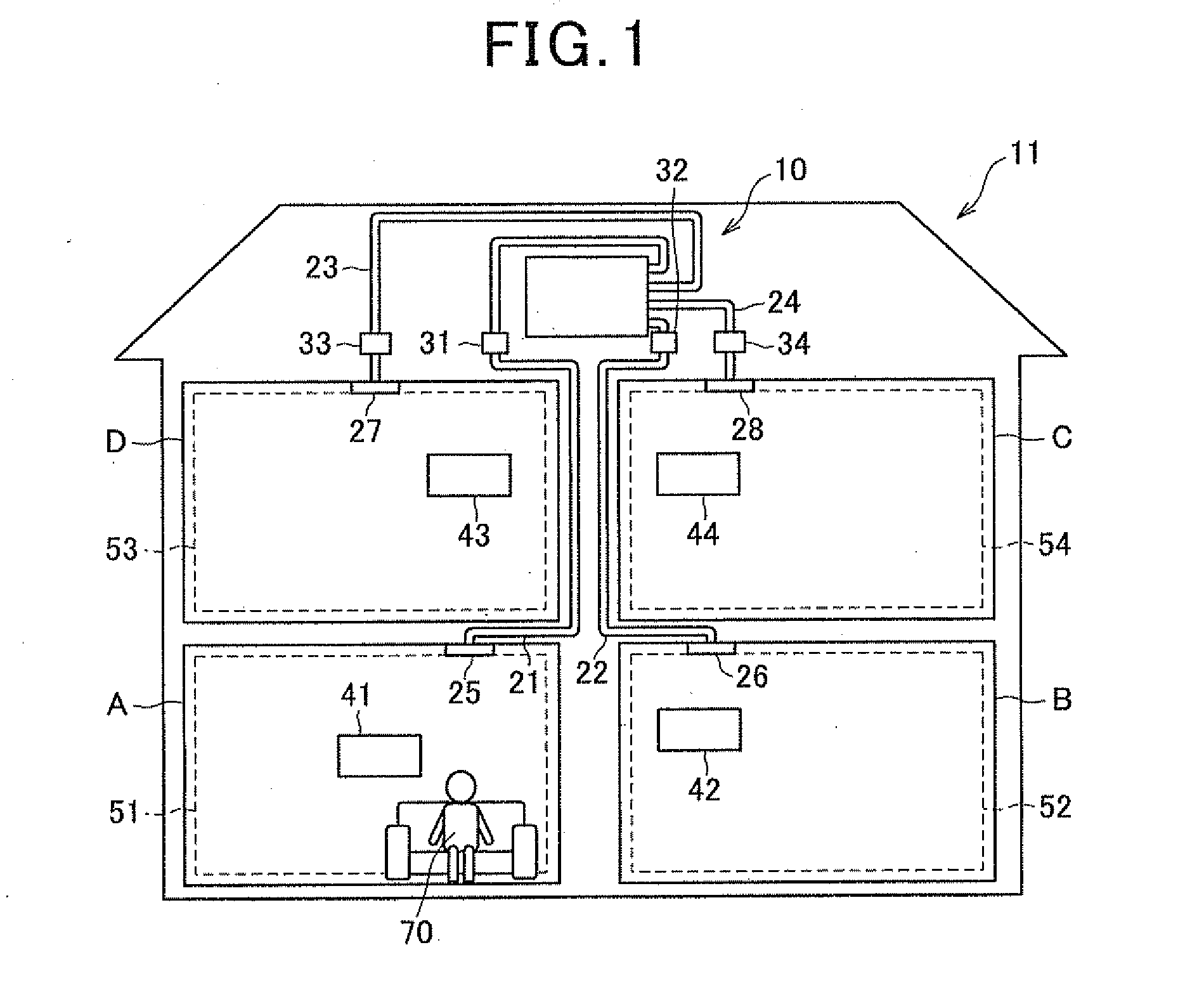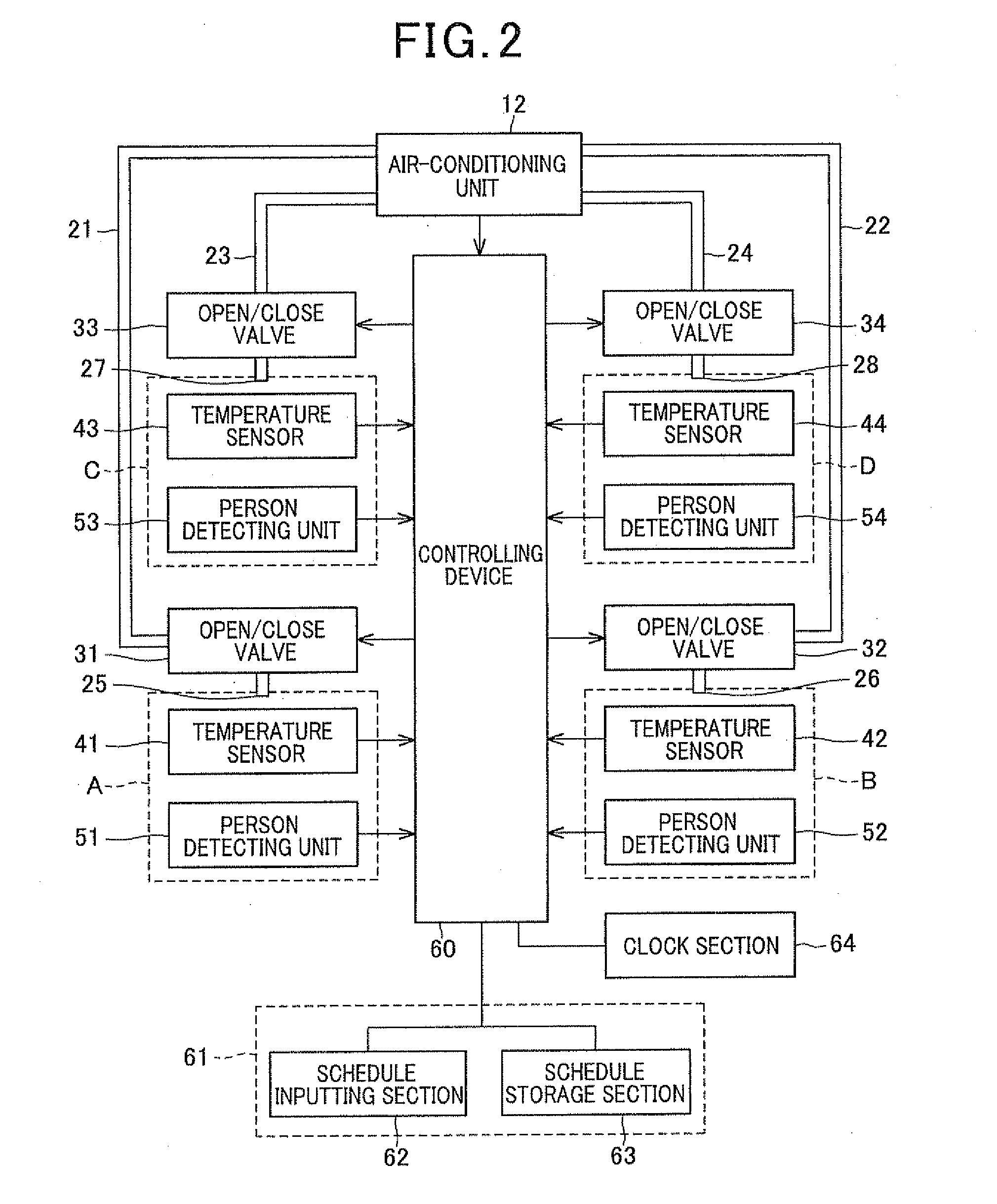Central air-conditioning system
- Summary
- Abstract
- Description
- Claims
- Application Information
AI Technical Summary
Benefits of technology
Problems solved by technology
Method used
Image
Examples
first embodiment
[0040]First, a configuration of a central air-conditioning system according to a first embodiment of the present invention will be described. As shown in FIG. 1, a central air-conditioning system 10 is provided in a house 11 having a plurality of rooms: room A, room B, room C, and room D. Here, to simplify the explanation, the central air-conditioning system 10 is described giving as an example the house 11 having four rooms A to D. As shown in FIG. 1 and FIG. 2, the central air-conditioning system 10 includes an air-conditioning unit 12, air-conditioner ducts 21 to 24, open / close valves 31 to 34, temperature sensors 41 to 44, person detecting units 51 to 54, and a controller 60 which is called a thermostat in some cases. The temperature sensors 41 to 44 and the person detecting units 51 to 54 are respectively provided in the four rooms A to D.
[0041]The air-conditioning unit 12 is, for example, configured by an external unit and an internal unit, and includes a known heat exchanger,...
second embodiment
[0127]A central air-conditioning system according to a second embodiment will be described. According to the second embodiment, the configuration of the central air-conditioning system is the same as that according to the first embodiment. However, a process differing from those according to the first embodiment is included. The central air-conditioning system according to the second embodiment will be described focusing on the differences.
[0128]The ordinary conditioning mode process according to the second embodiment differs from that according to the first embodiment.
[0129](Ordinary Conditioning Mode Process)
[0130]The ordinary conditioning mode process according to the second embodiment will be described with reference to FIG. 21.
[0131]When the controller 60 judges that the ordinary conditioning flag for the room A is set to “ON” at S531 in the conditioning mode confirmation process at S530 (Yes at S531) and judges that the temperature of the room A is within the ordinary temperat...
third embodiment
[0165]An application example of a person detecting unit will be described as a third embodiment with reference to FIG. 25.
[0166]The controller 60 judges the presence the person 70 in each room
[0167]A to D, and the entrance and exit of the person 70 into and from each room A to D using the person detecting units 51 to 54, as described according to the above embodiments. The controller 60 can detect a break-in by an intruder using the person detecting units 51 to 54. A specific example will be described below.
[0168](Detection of Break-In by Intruder)
[0169]As shown in FIG. 25A, the person detecting units 51 to 54 have seven monitoring areas 71 to 77 along the walls in each room. Among the monitoring areas 71 to 77, the monitoring area 71 and the monitoring area 72 include the window 81. For example, when a resident is not present in the room A, no peak temperature is detected in the seven monitoring areas 71 to 77, as shown in FIG. 25B. On the other hand, when an intruder 100 breaks in...
PUM
 Login to view more
Login to view more Abstract
Description
Claims
Application Information
 Login to view more
Login to view more - R&D Engineer
- R&D Manager
- IP Professional
- Industry Leading Data Capabilities
- Powerful AI technology
- Patent DNA Extraction
Browse by: Latest US Patents, China's latest patents, Technical Efficacy Thesaurus, Application Domain, Technology Topic.
© 2024 PatSnap. All rights reserved.Legal|Privacy policy|Modern Slavery Act Transparency Statement|Sitemap



